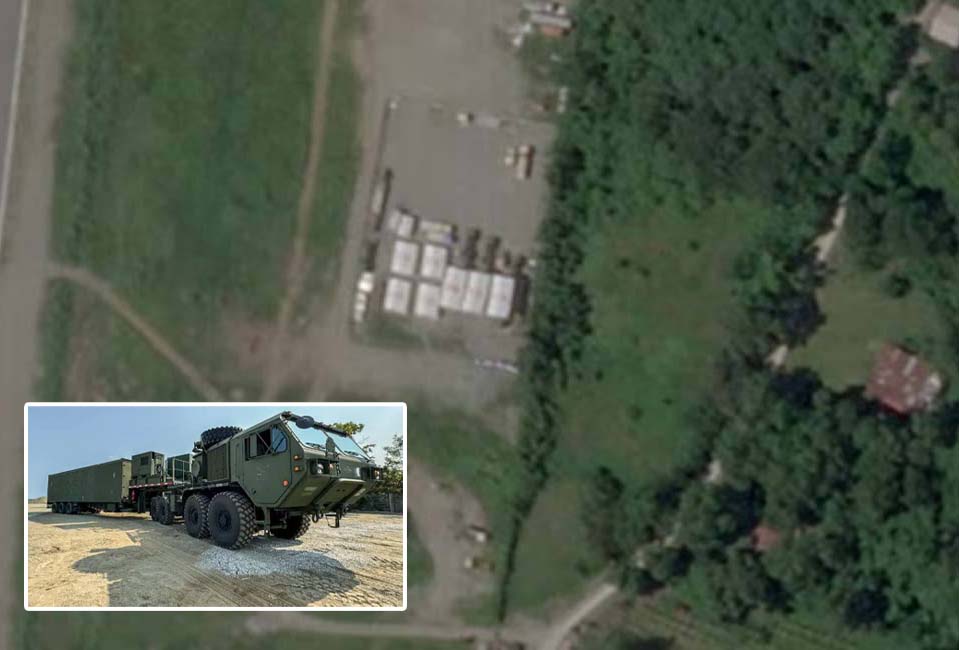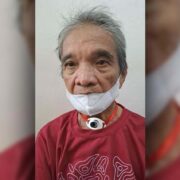From Laoag, US relocates missile launchers within PH

The US military has moved its Typhon launchers—which can fire multipurpose missiles up to thousands of kilometers—from Laoag airfield in the Philippines to another location on the island of Luzon, a senior Philippine government source said.
The Tomahawk cruise missiles in the launchers can hit targets in both China and Russia from the Philippines; the SM-6 missiles it also carries can strike air or sea targets more than 200 km away.
The senior Philippine government source told Reuters news agency that the redeployment would help determine where and how fast the missile battery could be moved to a new firing position. That mobility is seen as a way to make them more survivable during a conflict.
The relocation of the missile batteries comes as new US Secretary of State Marco Rubio underscored Washington’s “ironclad commitments” to the Philippines under the 1951 Mutual Defense Treaty (MDT) between the two countries.
Rubio discussed China’s “dangerous and destabilizing actions in the South China Sea” with Philippine Foreign Secretary Enrique Manalo over the phone on Wednesday in their first official conversation under the second Trump administration.
“Secretary Rubio conveyed that [China’s] behavior undermines regional peace and stability and is inconsistent with international law,” the US Department of State said in a statement.

Waltz, Teodoro, Romualdez
US President Donald Trump’s national security adviser Mike Waltz held talks with Defense Secretary Gilberto Teodoro Jr. and Philippine ambassador to the United States Jose Manuel Romualdez on “critical security matters” at the White House on Thursday, the Department of National Defense (DND) said.
During the meeting, Teodoro “highlighted the importance of strengthening bilateral defense ties in addressing emerging geopolitical challenges,” the DND said.
Waltz and his team “underscored the need to enhance cooperation with the Philippines and looked forward to increasing mutual security activities in support of a free and global Indo-Pacific, an initiative dating back to Trump’s first presidency,” it added.
“This engagement marked a significant step in further advancing the decades long alliance between the Philippines and the United States, signaling a renewed commitment to collaboration under the Trump administration,” according to the DND.
Security engagements between the allies have soared under President Marcos, who has pivoted closer to Washington and increased the number of military bases that American forces can access, including facilities facing the Chinese-claimed but democratically governed island of Taiwan.
Not permanent
The Typhon system is part of a US drive to amass a variety of antiship weapons in Asia.
Indo-Pacific Command (Indopacom), which oversees US forces in the region, told Reuters the Typhons have been “relocated within the Philippines.” Both Indopacom and the Philippine government declined to give the specific location to which the batteries were moved.
“The US government has coordinated closely with the Philippine government on every aspect of the MRC deployment, including the location,” said Cmdr. Matthew Comer of Indopacom, referring to the Typhon by the initials of its formal name, Mid-Range Capability.
He added that the relocation was not an indication that the batteries would be stationed permanently in the Philippines.
Satellite images showed the missile batteries and their associated gear being loaded onto C-17 transport aircraft at Laoag International Airport in recent weeks, said Jeffrey Lewis of the Middlebury Institute of International Studies. The white rain canopies that had covered the Typhon equipment were also removed, according to the images, seen by Reuters and not previously reported.
Philippine Army spokesperson Col. Louie Dema-ala told the Inquirer that he had no information to confirm the relocation of the Typhon system, but he said that it would be used for upcoming trainings between Filipino and American troops, specifically for the “Salaknib” exercise.
Salaknib, which means “shield” in Ilocano, is an annual exercise to strengthen the interoperability of the armies of the Philippines and the United States.
“This is between the (Philippine) Army Artillery Regiment and the 1st Multi-Domain Task Force, United States Army Pacific,” Dema-ala said.
The weapons system drew sharp criticism from China when it was first deployed in April 2024 during a training exercise. In September, when the United States said it had no immediate plans to pull the Typhon out of the Philippines, China and Russia condemned the deployment as fueling an arms race.

Source of tension
China’s foreign ministry accused the Philippines on Thursday of creating tension and confrontation in the region, and urged it to “correct its wrong practices.”
“I would like to emphasize again that the introduction of the intermediate-range missile system, a strategic offensive weapon by the Philippines, creates regional tension and confrontation, and provokes geopolitical confrontation and arms race,” foreign ministry spokesperson Mao Ning said in a regular news briefing in Beijing.
“This is a very dangerous move. It is also extremely detrimental to the people of the country and Southeast Asia, and to regional security,” she said.
Typhons are relatively easy to produce—drawing on large stockpiles and designs that have been around for a decade or more—and could help the United States and its allies catch up quickly in an Indo-Pacific missile race in which China has a big lead.
Although the US military has declined to say how many will be deployed in the Indo-Pacific region, more than 800 SM-6 missiles are due to be bought in the next five years, according to government documents outlining military purchases. Several thousand Tomahawks are already in US inventories, the documents showed.
Both missiles are Raytheon products.
The DND statement did not say whether the redeployment of the Typhon was discussed by Teodoro and Waltz.
Gibo on Trump 2.0
In an interview with Stanford University’s Hoover Institution released on Thursday, Teodoro said the Philippines and the US have the same goals in the face of growing regional tensions due to China’s expansive maritime claims.
He pointed out that the relationship between Manila and Washington was not intended merely to strengthen their bilateral ties but to create “new multilateral ones,” citing the trilateral partnership between the Philippines, United States and Japan.
“The trajectory remains the same, constantly towards our shared goals, particularly at this day and age when we confront an attempt to rewrite the international global order to the selfish interest of a big country, we know what that country is, that is China,” he said.
He said China has been forcibly “stealing” the Philippines’ sovereign rights to its exclusive economic zone and doing this not only through words “but through muscle.”
Price of compromise
“For the United States, this is a shared endeavor for the Philippines because we both want a rules-based global order, which China wants to disaggregate using redefinitions of history,” including its illegal 10-dash-line claim, he said.
But according to Teodoro, Mr. Marcos has already made a “clear cut statement that he would be resolute in not giving in to any of the claims of China” over Philippine territory or areas where the country has jurisdiction under international law.
“The President will not compromise and will be steadfast in that,” he added. “Managing the conflict would mean accepting a status quo where China is in areas where it is not supposed to be. And this is a red line which the President will not compromise on.”
“If we compromise with China now, we are robbing the future generations of Filipinos of what is rightfully for them to rely on for their survival in a more volatile world,” he warned. —WITH REPORTS FROM REUTERS, NESTOR CORRALES AND JACOB LAZARO
Reuters, the news and media division of Thomson Reuters, is the world’s largest multimedia news provider, reaching billions of people worldwide every day. Reuters provides business, financial, national and international news to professionals via desktop terminals, the world's media organizations, industry events and directly to consumers.





















